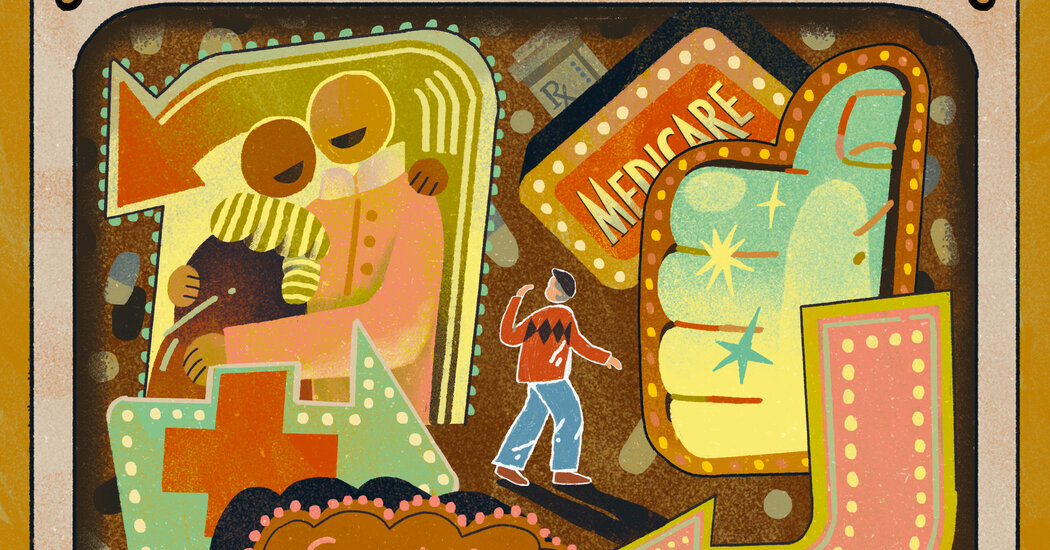Ways You Can Still Cancel Your Federal Student Loan Debt
There are still plenty of ways to get your student debt wiped away.
The Supreme Court’s decision on Friday to block President Biden’s loan forgiveness program will be an enormous disappointment for the 43 million people who might have benefited from having up to $20,000 of debt canceled, but millions of borrowers have already gotten relief thanks to a grab bag of methods that are still available.
That’s because the Supreme Court’s disapproval of the plan does not change laws and regulations that already give many federal student loan borrowers an escape hatch.
On Friday afternoon the White House announced a new effort to provide loan cancellation using the so-called “settlement and compromise” authority it has under the Higher Education Act. This effort will take months at a minimum, and its scope and the number of people who could benefit is not yet clear.
What follows is a list of ways to eliminate your federal student loan balance aside from paying in full. (Rules are different for private student loans that do not come from the government, and they’re generally much more strict.) It includes many citations for other articles, F.A.Q.’s and explainers we have published on these topics.
Too many people do not know they are eligible for one or more of these programs. If you know someone who is struggling with student loan debt, suggest that the borrower review every last option.
Income-Driven Repayment
This catchall mechanism for repaying debt — or having it canceled if you cannot pay in full after a couple of decades — has the highest potential for the most people. It’s also pretty confusing.
At its most basic, it works the way it sounds: Your monthly payment depends on your income. If you cannot afford to make a standard payment (according to the federal government’s definition of affordability), then you pay less, and a formula determines the exact amount. If you have not repaid your balance after either 20 or 25 years of income-driven payments (depending on the repayment plan — there are several types), then the government cancels the remaining debt.
The U.S. Department of Education explains the different ways this can work on its website.
The Biden administration has proposed a much more generous form of income-driven repayment — separate and apart from the debt-cancellation plan that the court disallowed — that could take effect soon, though legal challenges to this plan are possible as well. My colleague Tara Siegel Bernard wrote a guide to the proposal in January.
For those in the middle of counting to 20 or 25 years, the Education Department is adjusting the credits that millions of people have earned toward debt cancellation. If you were ever, say, in forbearance or deferment, you could benefit by having additional months or years count toward the total years of qualifying payments. And if you availed yourself of the pandemic payment pause that is supposed to end this year, those months that you did not make payments will still count toward your 20 or 25 years.
Ann Carrns wrote about the Education Department effort in March.
Public Service Loan Forgiveness
The once-beleaguered loan forgiveness program — where government and nonprofit employees have their balance eliminated after 10 years of payments — has improved in recent years.
During that decade, you have to be working full time in a qualifying job, repaying a so-called direct federal loan, making those payments in an income-driven repayment plan and meeting the payment deadline. Thanks to Biden administration adjustments like the one that Ann wrote about, hundreds of thousands of teachers and social workers have become debt-free recently.
I summarized many changes to the program in a 2021 column. You can read profiles of several people who finally eliminated their balances in a 2022 column. In May, I wrote about a 28 year-old who helped her retired mother cancel her debt.
Closed or low-performing schools
For years, the Education Department has maintained a way to cancel student loan debt that allows for “borrower defense.” That allows people to petition the government if they believe their school misled them, engaged in misconduct or broke a state law relating to the loan or the services the school was supposed to provide.
When President Donald J. Trump was in office, the Education Department tried to tighten the rules and slow the process. Under President Biden, the Education Department made the rules more lenient. In 2022, many students who borrowed to attend for-profit schools or those run by chains like Westwood College, Corinthian Colleges, DeVry University and ITT Technical Institute (among others, including schools that shut down altogether) had their debt balances wiped out.
The Education Department has a good explainer on borrower defense on its website.
Bankruptcy Discharge
Yes, you can discharge your student loan debt by filing for personal bankruptcy. No, it is not easy.
To wipe your debt away in court, you need to meet a certain legal standard — proving that repayment will create an “undue hardship.” Often, that can involve arguing that there is a “certainty of hopelessness” that you’ll ever pay down your debt. Much will depend on the judicial circuit you find yourself in and even the judge who hears your case.
But a total discharge of the debt is not impossible. Last year, the Biden administration made some changes to make the process slightly easier, and Tara wrote about it in November.
Disability Discharge
In the event that you become disabled in a way that is “total and permanent,” you can discharge your debt.
If the Social Security Administration or the Department of Veterans Affairs classifies you as disabled, this should be sufficient for automatic discharge. Mental illness can be a qualifying condition, and the Social Security Administration explains how on its website.
Otherwise, according to the Education Department, a doctor would need to certify that you were “unable to engage in any substantial gainful activity due to a physical or mental impairment” that could be “expected” to result in death, had been continuous for at least five years or could be expected to last for at least five years.
The Education Department made disability qualification a bit easier last year, and it explained the changes in a new release.
Debt Won’t Carry On
If you’re a young adult wondering about the federal PLUS loans your relatives took out to pay for your education, you may be wondering whether the debt dies with the person or people who take it on.
It does. The federal government will not make a claim on their estate, and you will not inherit the balance.


